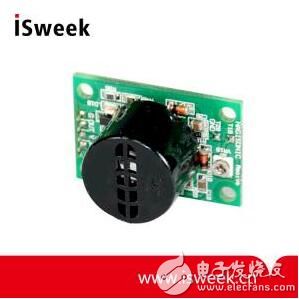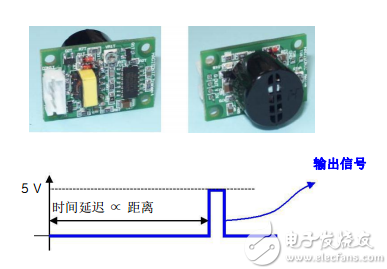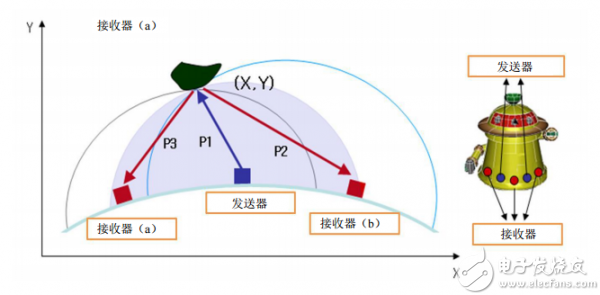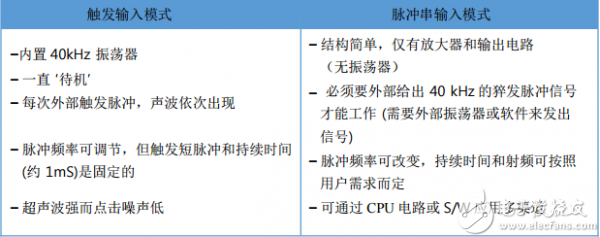With the popularization and application of sensor technology, the development of robots has attracted much attention. At the same time, due to the advancement of sensor technology, the development of industrial robots has been supported. Visible sensors have contributed to the rapid and orderly development of the Chinese robotics industry. The ultrasonic sensor used in the robot is an electronic module with a measuring distance between 3cm and 400cm . It can be used to help robots avoid obstacles or distance measurement and obstacle avoidance projects for other related projects. The sensor can be said to be used to detect the robot's own working status, and the robot's intelligent detection of the external working environment and the status of the object's core components. Not only can the specified measurement be measured, but it can also be converted into a device or device that can use the output signal according to a certain law.

Due to the strong directionality of the ultrasonic wave, the distance traveled in the medium is relatively long. Therefore, ultrasonic waves are often used to measure the distance. For example, a range finder and a level measuring instrument can be realized by ultrasonic waves. The use of ultrasonic detection is often more rapid, convenient, simple calculation, easy to do real-time control, and can meet the industrial practical requirements in the measurement accuracy, so it has also been widely used in the development of mobile robots.
Â
In order for the mobile robot to automatically avoid walking, it must be equipped with a distance measurement system so that it can obtain distance information (distance and direction) from obstacles in time. The ultrasonic ranging system is composed of three directions (front, left, and right) to provide a distance information for the robot to understand its front, left, and right environments. The ultrasonic sensor can be used as ultrasonic ranging alone when connected to the power supply. The ultrasonic sensor can also specify to output the segmented distance detection signal from the I/O port of the microcontroller and can be directly mounted on the robot as an application for finding objects, obstacle avoidance detection and the like. Let's take a look at the Hagisonic Robot Ultrasonic Sensor Module - HG-M40 Series and HG-L40 Series together to learn about the specific solution for the robot ultrasonic sensor module.

I. Robotic Ultrasonic Sensor Module - HG-M40 Series , HG-L40 Series Product Features
Â
Detecting objects, measuring distance
Medium distance
Multidirectional
"Click noise" is low
indoor environment
Dead-time minimization
Real-time signal (5V TTL)
Working at 40kHz
3 Modules − Transceiver (HG-M40D) − Transmitter (HG-M40T) − Receiver (HG-M40R)

Second, ultrasonic distance measurement principle

The ultrasonic transmitter emits ultrasonic waves in a certain direction. At the same time as the transmitter starts timing, the ultrasonic wave propagates in the air, and the ultrasonic waves are reflected immediately after encountering obstacles. The two ultrasonic receivers immediately stop receiving the reflected waves and stop immediately. Timing, and measure the ratio of distance and flight time for each path (P1+P2, P1+P3). The propagation speed of the ultrasonic wave in the air is 340m/s . According to the time t recorded by the timer, the distance s from the obstacle surface can be calculated, that is: s=340t/2 .
Â
Third, the robot ultrasonic sensor module - HG-M40 series , HG-L40 series module and the difference between the model
Â
1, the module
Â
1 Transceiver (D): • Can be used not only as a transceiver module, but also as a receiver or transmitter in different wiring modes.
Â
Because the transceiver emits ultrasonic waves and waits for a reply, it can detect distances of 30cm to 40cm and more. No matter how
Â
As such, it will try to identify if the object is somewhere.
Â
2 Transmitter (T): Sends only ultrasonic waves.
Â
3 Receiver (R): Receives only ultrasonic waves.
Â
※ When using 2 or more transmitters and receivers, 1~2cm proximity detection is possible.
Â
※ Similarly, if a transceiver is used, when it is used independently as a transmitter or receiver, it can also detect obstacles as short as 1 to 2 cm .
Â
2, the mode
Â
Trigger input mode (M-type)
Pulse train input mode (L-type) 3. Difference between M-type and L-type .

Because measuring distance with ultrasound is not a point measurement. Ultrasonic sensors have a certain diffusion characteristics, and the emitted ultrasonic energy is mainly concentrated on the main lobe, and is wavyly attenuated along both sides of the main wave axis, (conventional) about a diffusion angle of about 60° (optional). In fact, the distance calculation is based on the success of ultrasound, the vertical reflection in the name of. However, it is difficult for the mobile robot to ensure the stability of its own motion posture. The ultrasonic sensor is used to fix the detection method of the mobile robot body. When the mobile robot deviates from the parallel wall surface, the detection system is often difficult to obtain the actual distance. In addition, the divergence characteristics of ultrasonic waves can only provide the distance information of the target obstacle when applied to the measurement of obstacles, and cannot provide the direction and boundary information of the target. Therefore, a plurality of ultrasonic sensors and other sensors need to work together.
Plug Terminal Block,Screw Terminal Plug,Terminal Block Plug And Socket,Plug In Terminal Block Connector
Cixi Zhongyi Electronics Factory , https://www.zybreadboard.com
